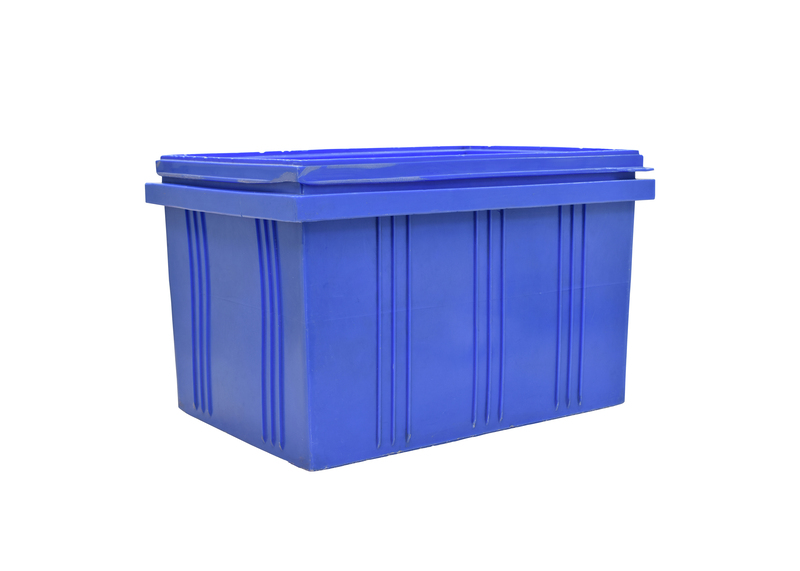Safeguard Your Sofa: Expert-Approved Long-Term Storage Tactics
Posted on 17/05/2025
Safeguard Your Sofa: Expert-Approved Long-Term Storage Tactics
Planning to move, renovate, travel, or simply need extra space? Protecting your furniture, especially your sofa, is a priority. Sofas are a significant investment and a comfort item in any household, making it essential to store them properly. In this comprehensive guide, we reveal expert-approved tactics to safeguard your sofa during long-term storage, ensuring it remains as stylish and comfortable as the day you packed it away.
Why Proper Sofa Storage Matters
Your sofa faces many risks in storage: moisture, pests, dust, temperature changes, and physical damage. Using correct long-term storage strategies prolongs its life, prevents unsightly stains and odors, and saves you money on repairs or replacements. Below, discover everything you need to know about safe sofa storage for months or even years.

Preparation: The Most Crucial Step in Sofa Storage
Preparation is key. Skipping prep work can leave your sofa vulnerable to irreversible harm. Here's how to ready your couch for long-term safekeeping:
1. Deep Clean Your Sofa Before Storage
- Vacuum Thoroughly: Start by vacuuming crevices, under cushions, and all surfaces to eliminate crumbs, dust, and potential pests.
- Fabric Cleaning: For fabric sofas, use an upholstery cleaner suited to your material. Allow it to dry completely before proceeding further.
- Leather Care: Wipe down leather couches with a damp cloth, and apply a leather conditioner to prevent drying or cracking.
- Spot Cleaning: Address stains with appropriate cleaners to prevent them from setting during storage.
2. Disassemble, If Possible
Many sofas have removable legs, cushions, headrests, or even modular sections. Disassemble what you can -- it will:
- Reduce the risk of damage during transport and storage.
- Make your sofa easier to wrap and handle.
- Allow for more compact and efficient storage.
Label and bag hardware for easy reassembly.
3. Protect With the Right Wrapping Materials
Resist the urge to use just any cover or plastic sheet. Instead, the best materials for sofa protection during long-term storage include:
- Soft moving blankets or furniture pads - to cushion and protect against abrasions.
- Breathable furniture covers - allow airflow and prevent moisture buildup, unlike standard plastic wrap.
- Plastic wrap - can be used over blankets for extra protection, but avoid direct contact as it can trap moisture.
Tip: Avoid tightly sealing your sofa in plastic for extended periods to prevent mold and mildew.
Choosing the Best Storage Location for Your Sofa
Climate-Controlled vs. Standard Storage Units
Climate control is the gold standard for long-term furniture storage. Fluctuating temperatures and humidity can warp, crack, or mold your couch, whether it's leather, wood, or fabric. Here's what to consider:
- Climate-controlled units keep temperature and humidity stable, ideal for delicate or high-value sofas.
- Standard units are less costly but may expose your sofa to extreme conditions. If using one, take extra precautions (triple-layer protection, moisture absorbers).
Home Storage Tips
- Choose a dry, cool, and well-ventilated area like a spare room or attic.
- Keep away from windows, radiators, or areas prone to leaks.
- Maintain airflow to prevent damp and odor accumulation.
Expert Positioning & Stacking
Don't Stack Heavy Items on Your Sofa
It might be tempting to maximize space by stacking, but never stack boxes or other furniture on top of your sofa. Even padded, heavy objects can:
- Distort cushioning
- Damage frames
- Leave permanent dents
Instead:
- Position your sofa upright on its legs if possible.
- Keep it off the ground using risers or pallets; this guards against contact with moisture or flooding.
- Arrange other items around (not on top of) your protected sofa, leaving space for air circulation.
Strategic Sofa Placement for Maximum Preservation
For optimal sofa longevity in storage:
- Allow at least 4-6 inches between the sofa and the wall for air movement.
- Place absorbent items (like a bucket of silica gel or moisture absorber) nearby in damp climates.
- Loose or removed cushions can be stored in breathable bags or atop the sofa, provided nothing heavy compresses them.
Advanced Sofa Storage Tactics: Going Beyond the Basics
1. Pest Prevention Strategies
Pests can be a nightmare for sofa owners. Rodents and insects may be attracted to traces of food or warmth.
- Double-check cleaning - food residues invite pests.
- Use pest repellents such as cedar blocks, lavender bags, or moth balls near (but not directly on) your sofa.
- Avoid cardboard boxes near the sofa, as they can attract insects and rodents.
- Inspect your storage unit regularly, if possible, to catch potential issues early.
2. Moisture and Humidity Control
Moisture is one of the top threats to long-term furniture integrity. To safeguard your sofa from damp and mildew:
- Opt for climate-controlled storage when available.
- Use silica gel packs, dehumidifiers, or moisture-absorbing materials in and around your sofa.
- Periodically air out items where feasible to keep them fresh.
3. Regular Monitoring and Maintenance
If your storage is accessible, periodically check on your sofa:
- Look for any signs of moisture, mold, pests, or fabric deterioration.
- Re-adjust covers or re-apply moisture/pest deterrents as needed.
- Rotate cushions or reposition the sofa slightly to avoid prolonged pressure on one area.
Common Sofa Storage Mistakes to Avoid
Do not jeopardize your investment by making these mistakes:
- Skipping the cleaning step - Stains can worsen, and dirt can attract pests or cause fabric breakdown.
- Over-wrapping in plastic - While plastic offers some protection, it also traps moisture, which can breed mold.
- Choosing a poor-quality storage location - Basements, garages, and sheds are often damp and poorly ventilated.
- Neglecting your sofa - Out of sight shouldn't mean out of mind! Schedule routine checkups where possible.
- Not using furniture pads or protective covers - Moving blankets and breathable covers cushion and shield your sofa much better than old sheets or tarps.
Restoring Your Sofa After Long-Term Storage
Your sofa has been safely tucked away -- now it's time to bring it out of storage and back into your living space. Here's how to ensure it's clean, ready, and inviting:
- Carefully remove covers or blankets.
- Inspect for pests, moisture, or odor issues. Allow your sofa to breathe for a few hours in a well-ventilated room.
- Vacuum the surface and crevices again to remove any dust or debris that may have settled.
- Spot clean any areas that smell musty or look dirty.
- For fabric couches, consider a professional upholstery cleaning for complete freshness.
- If your sofa legs, arms, or cushions were removed, use your labeled bags to reassemble easily.
Eco-Friendly and Budget-Friendly Storage Solutions
Want to safeguard your sofa while staying sustainable and cost-effective?
- Seek second-hand moving blankets or purchase high-quality ones for reuse.
- Use repurposed sheets or blankets as a first layer of protection (ensure they are clean and breathable).
- Share a storage unit with friends or family to save money and increase access for periodic checks.
- Consider home-based storage in a spare room over renting a unit, if you have adequate space and environment controls.

Sofa Storage FAQs
How long can you safely store a sofa?
With proper preparation, climate control, and ongoing checks, sofas can be safely stored for several years without damage. However, the longer it's stored, the more susceptible it is to subtle changes (like fading, fabric fatigue, or foam breakdown).
Is it OK to store a sofa on its side?
Storing a sofa upright (on its legs) is usually safe, but avoid prolonged storage on its side or back. This can stress the frame and padding, potentially leading to distortion.
Can you keep a sofa in a garage, basement, or shed?
These locations are not ideal due to humidity and temperature swings. If no other option exists, invest in high-quality moisture absorbers, keep your sofa heavily wrapped (yet breathable), and elevate it off the floor.
What is the best cover for a sofa in storage?
Breathable moving covers or specialized furniture storage covers work best. Avoid tight plastic sheeting except as an outer layer for dust/water.
Conclusion: Secure Your Sofa's Future
Preserving your sofa in storage takes thoughtful preparation, smart product choices, and a bit of ongoing care. From deep cleaning to optimal wrapping, careful placement, and periodic checks, these expert-approved long-term sofa storage tactics help you avoid damage, save money, and protect your beloved piece for years to come. Whether you need to temporarily store your couch or plan a long-term getaway, follow these steps to ensure your sofa stays comfortable, clean, and ready for life's next chapter.
Ready to safeguard your sofa for long-term storage? Implement these tactics today for peace of mind and a pristine return to your living space!






